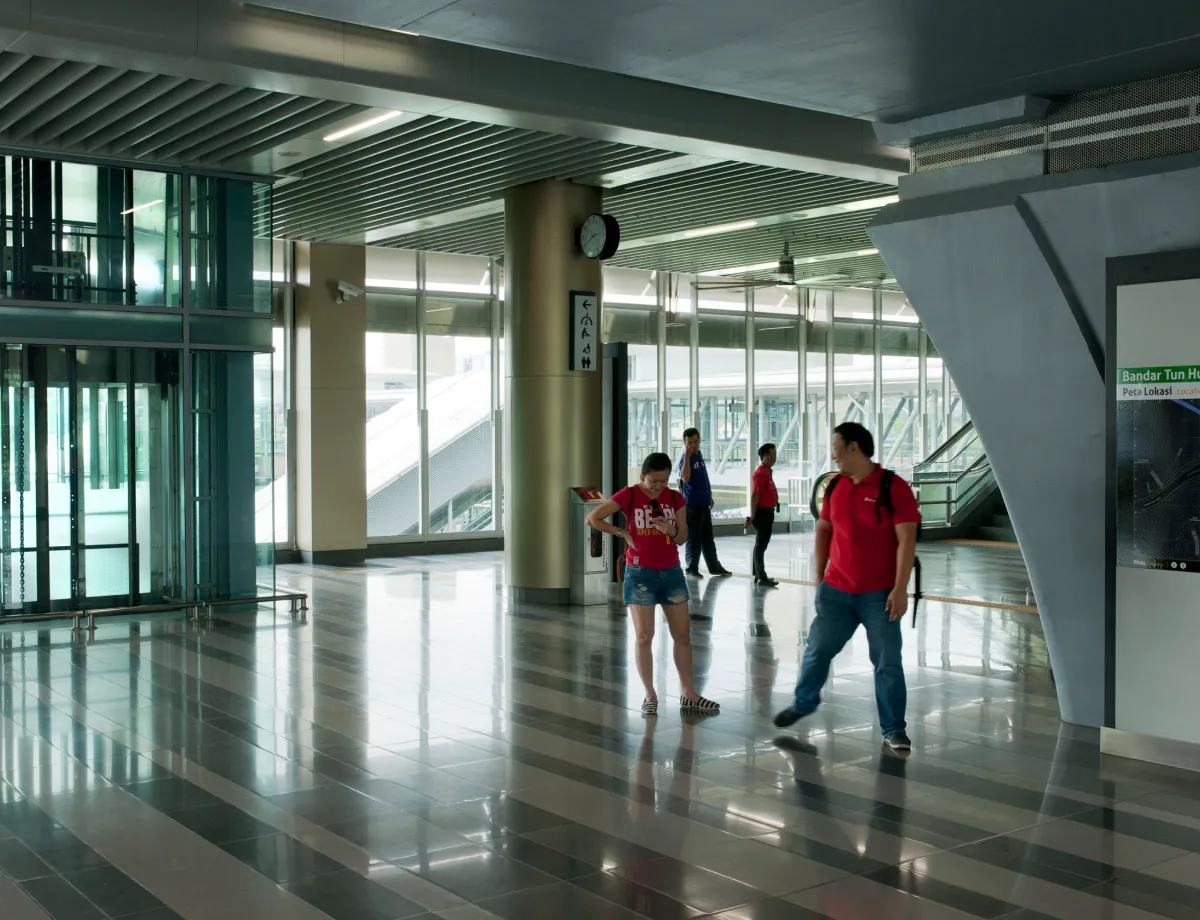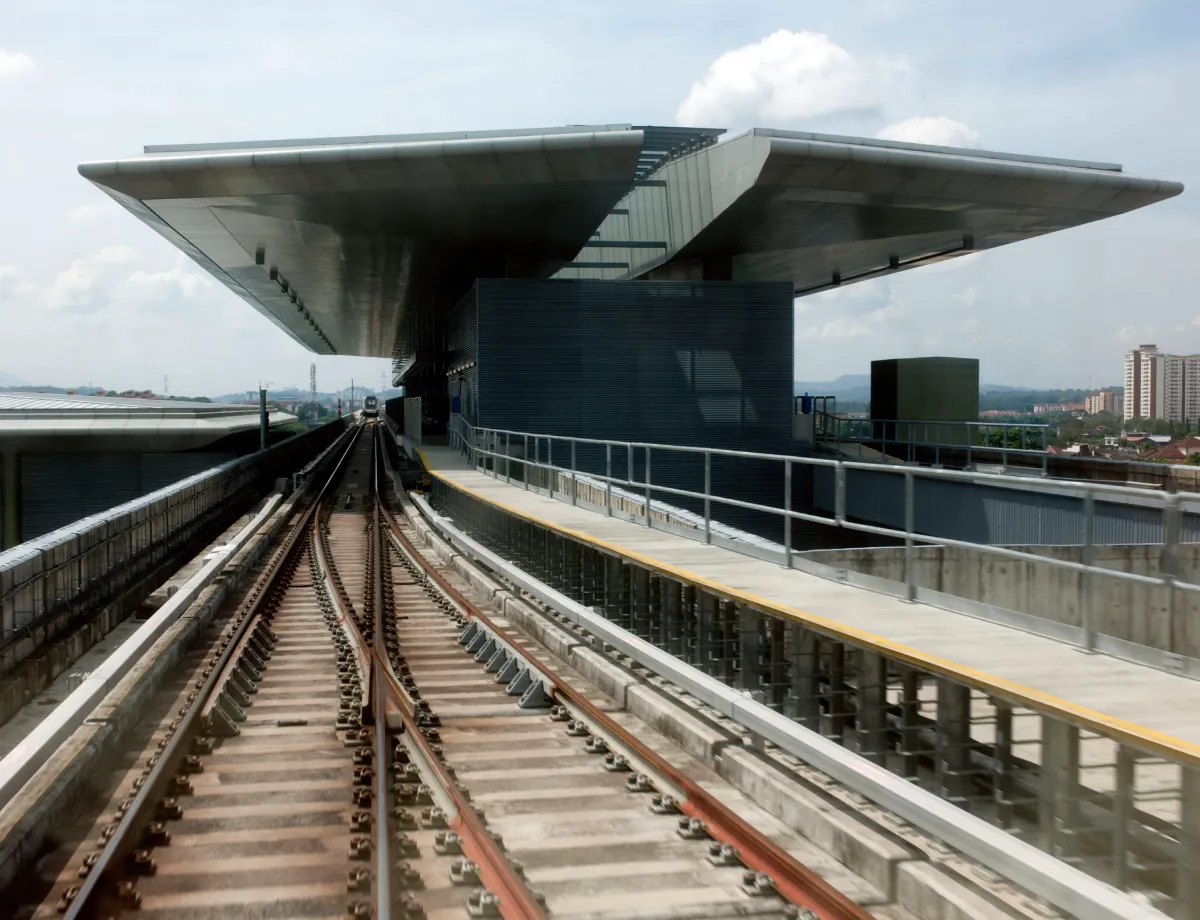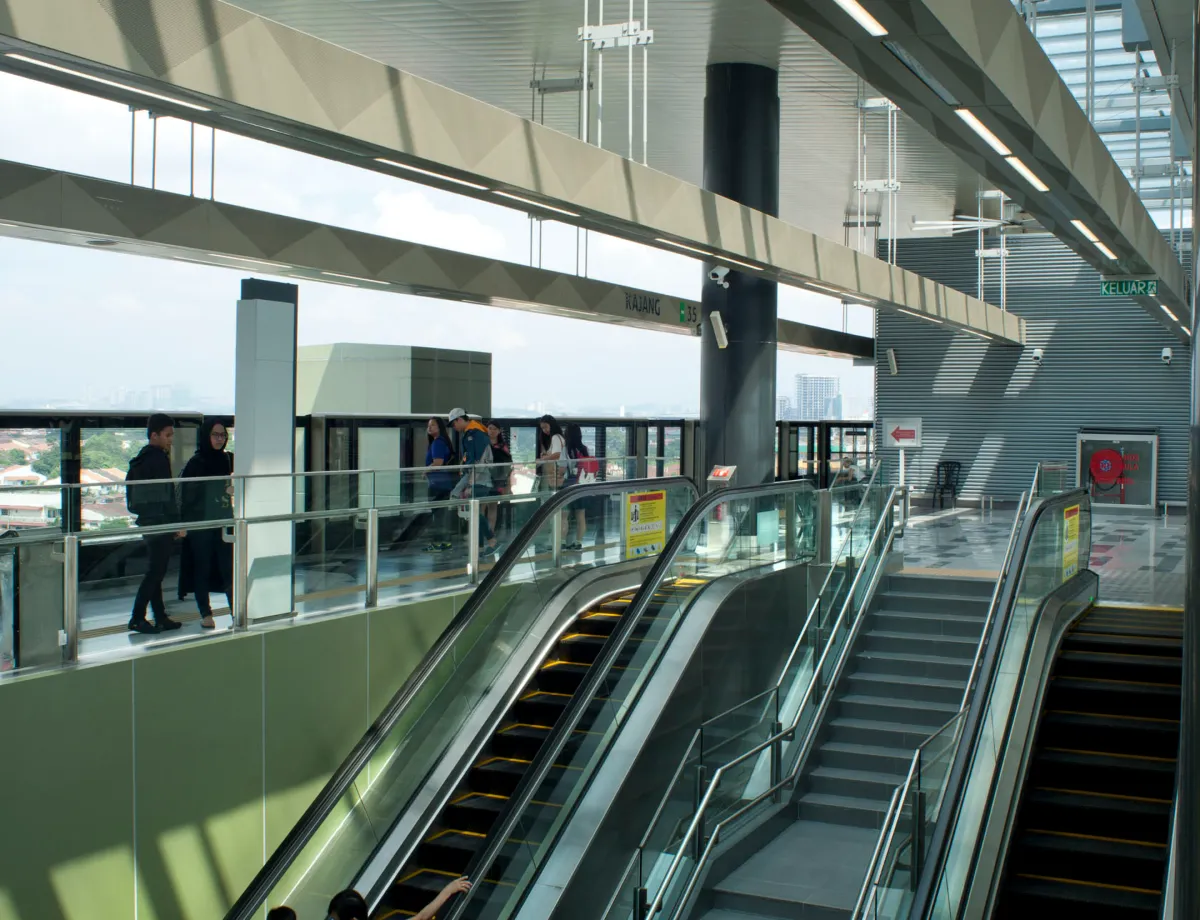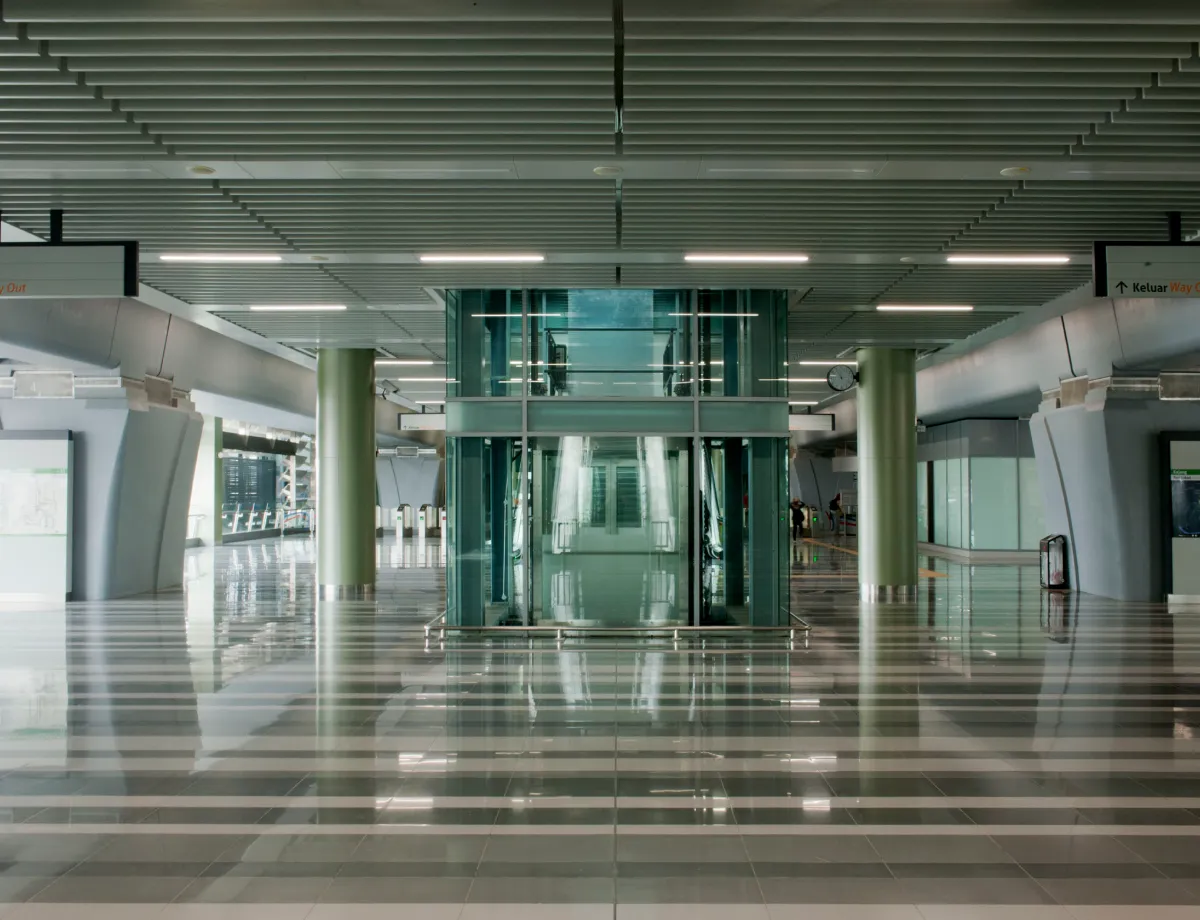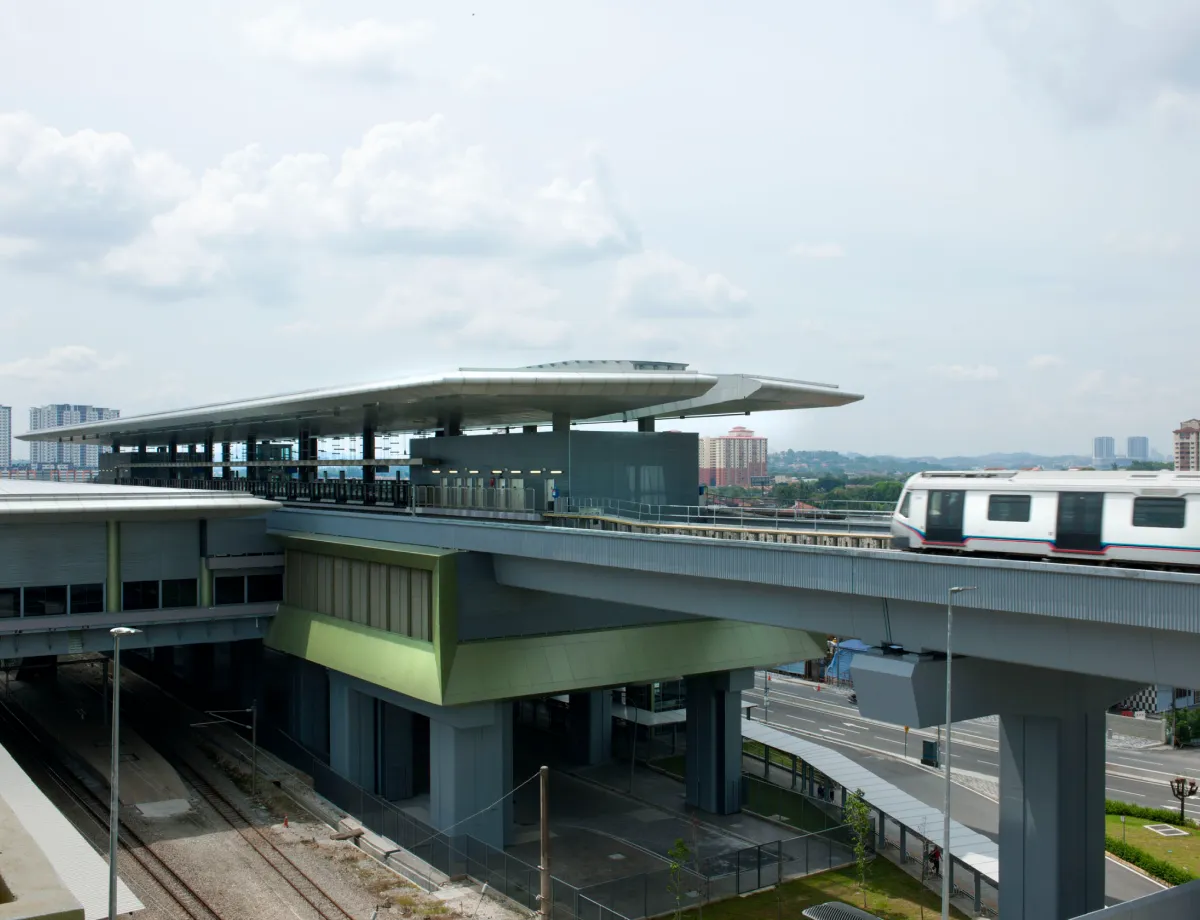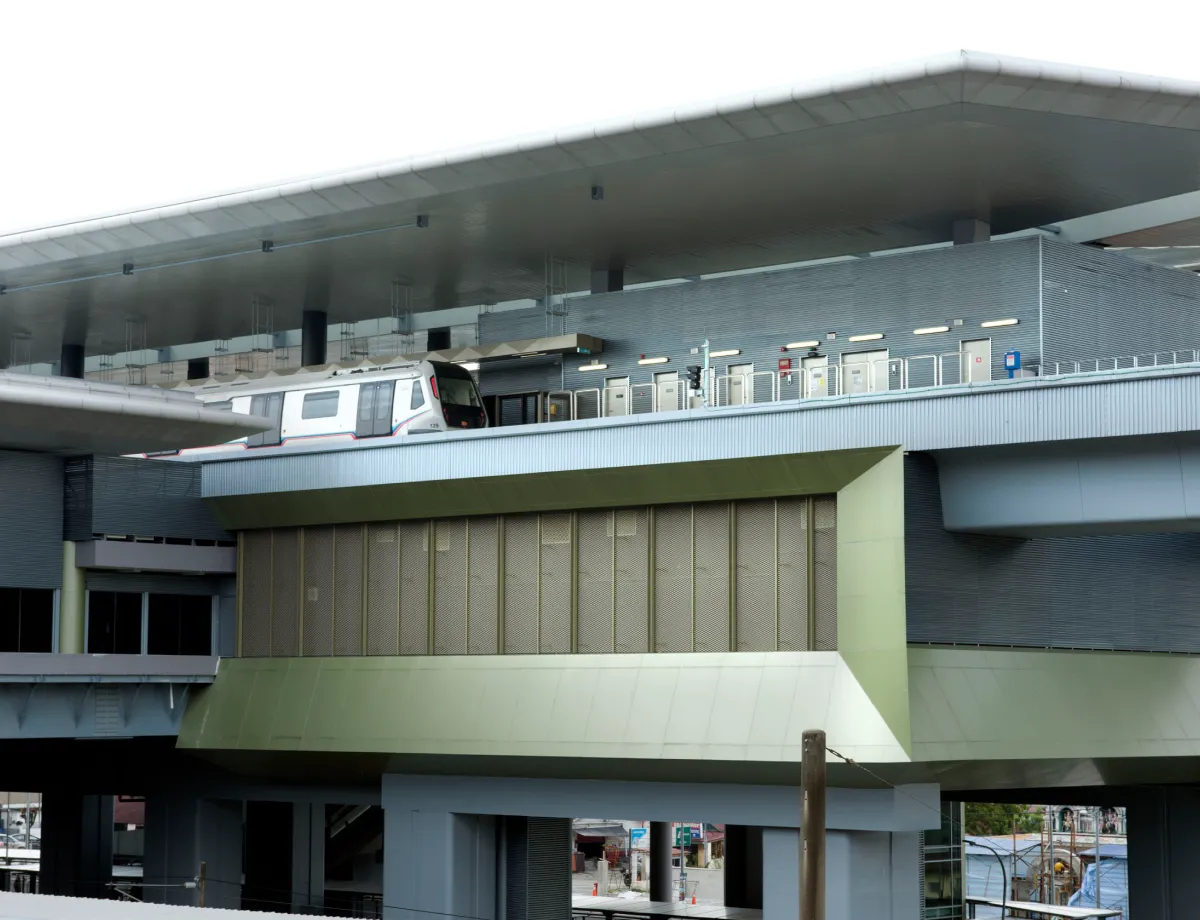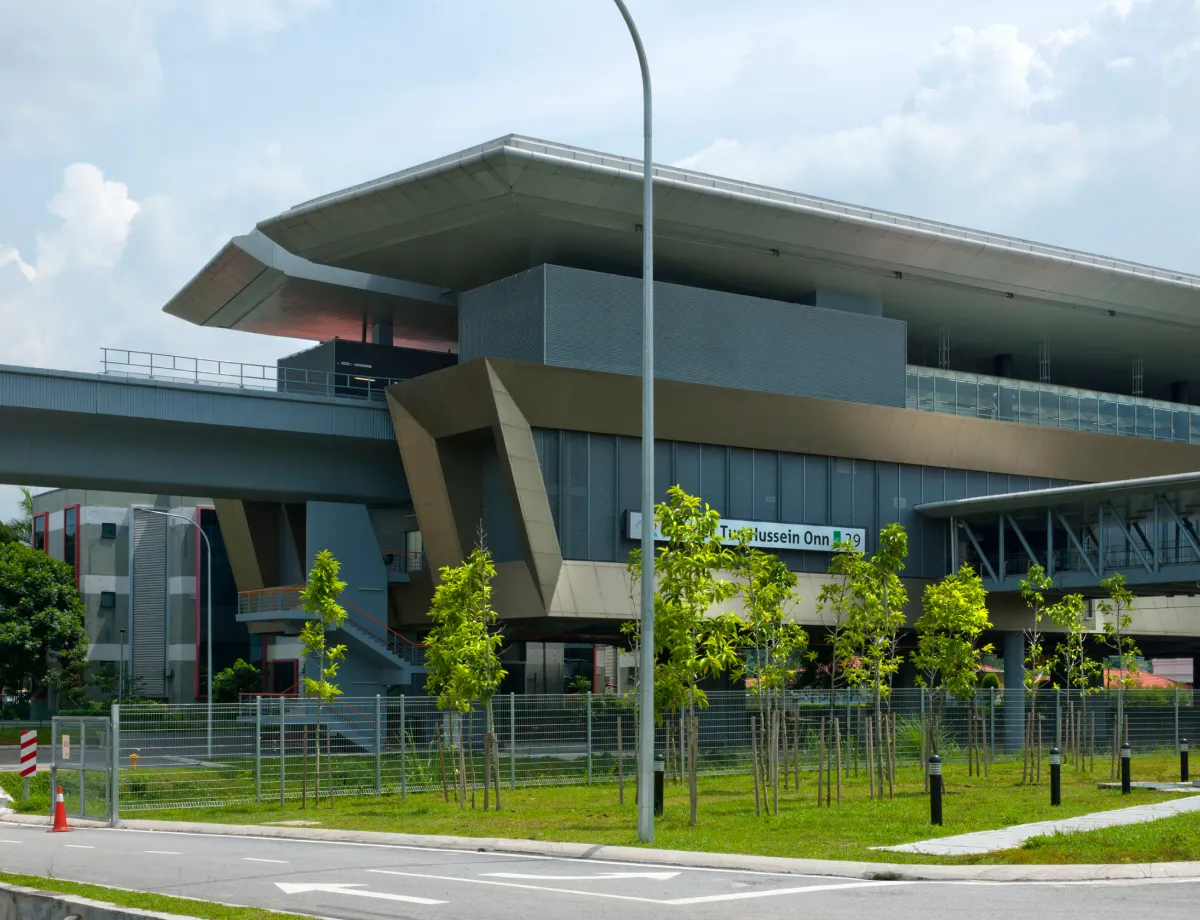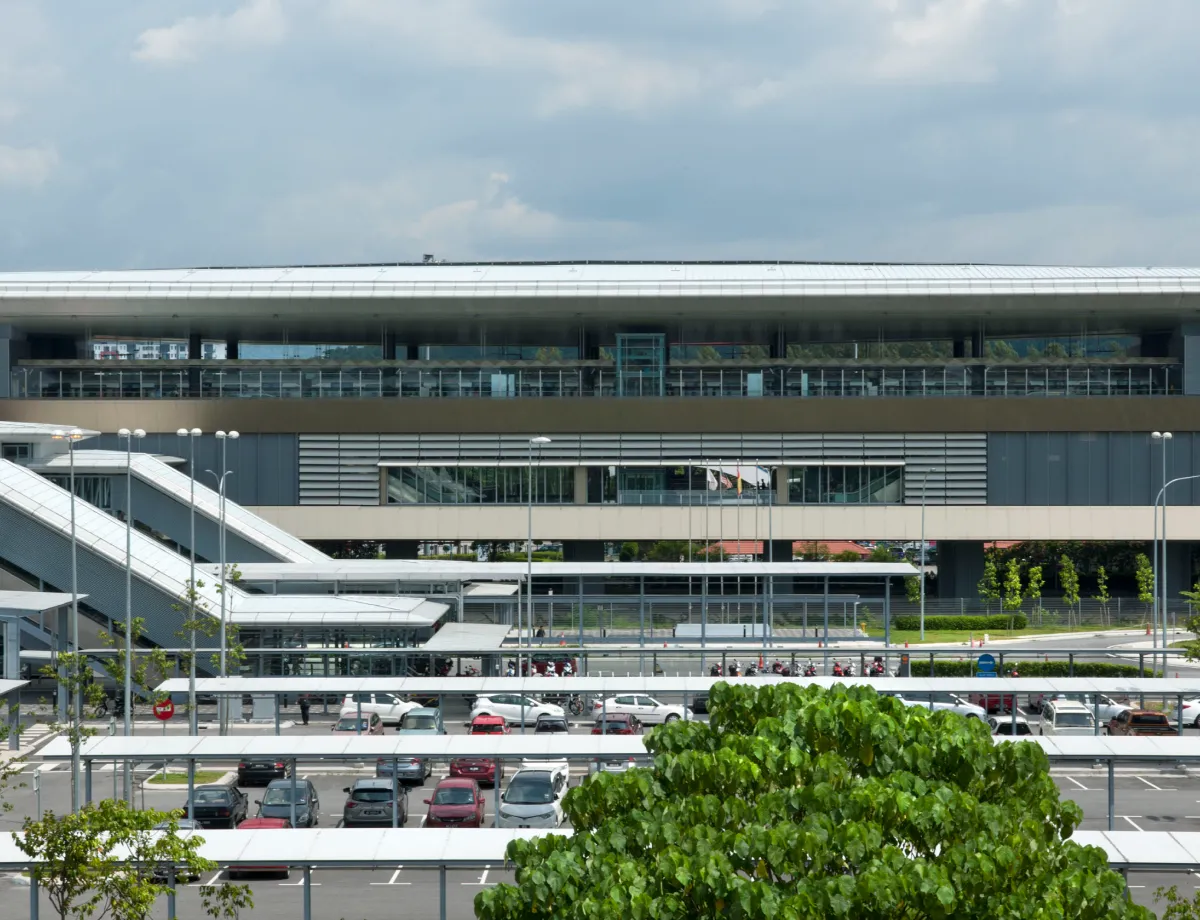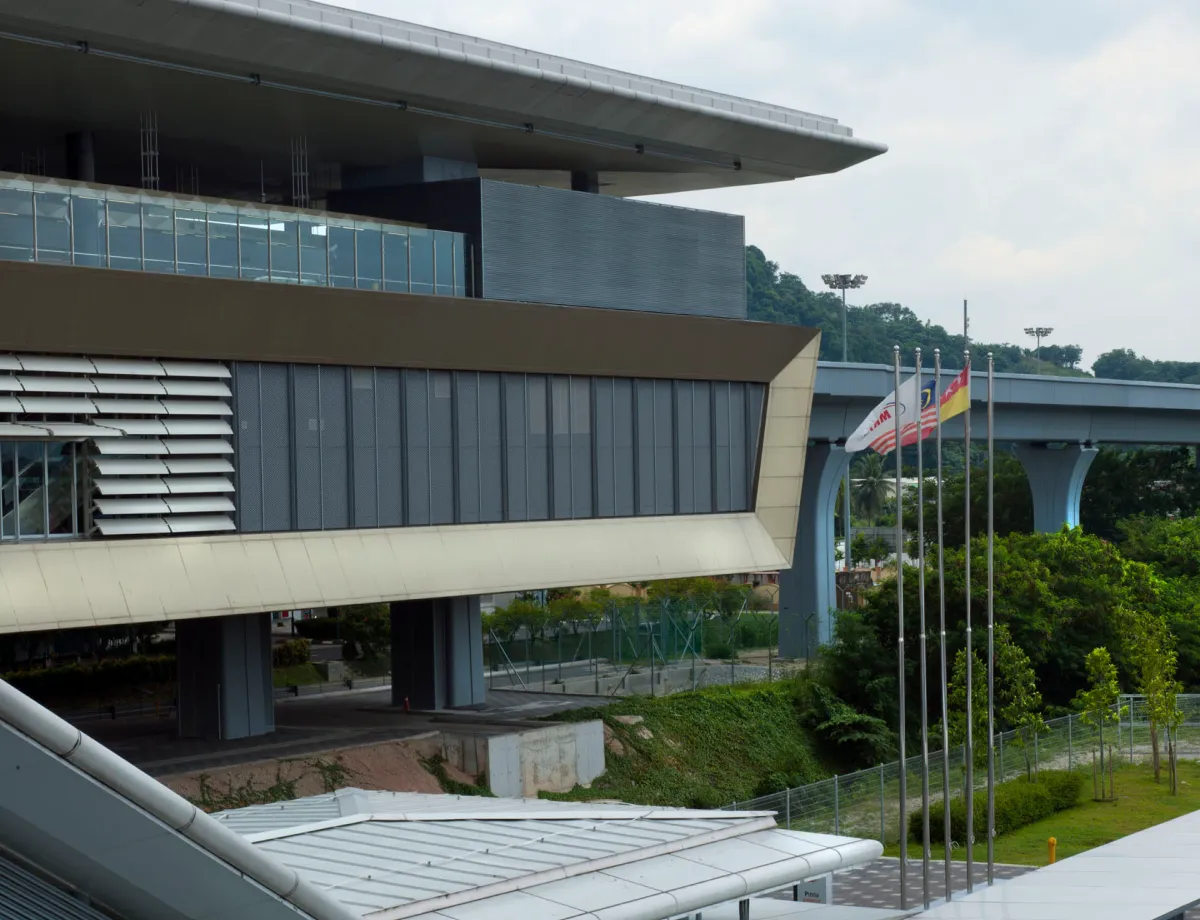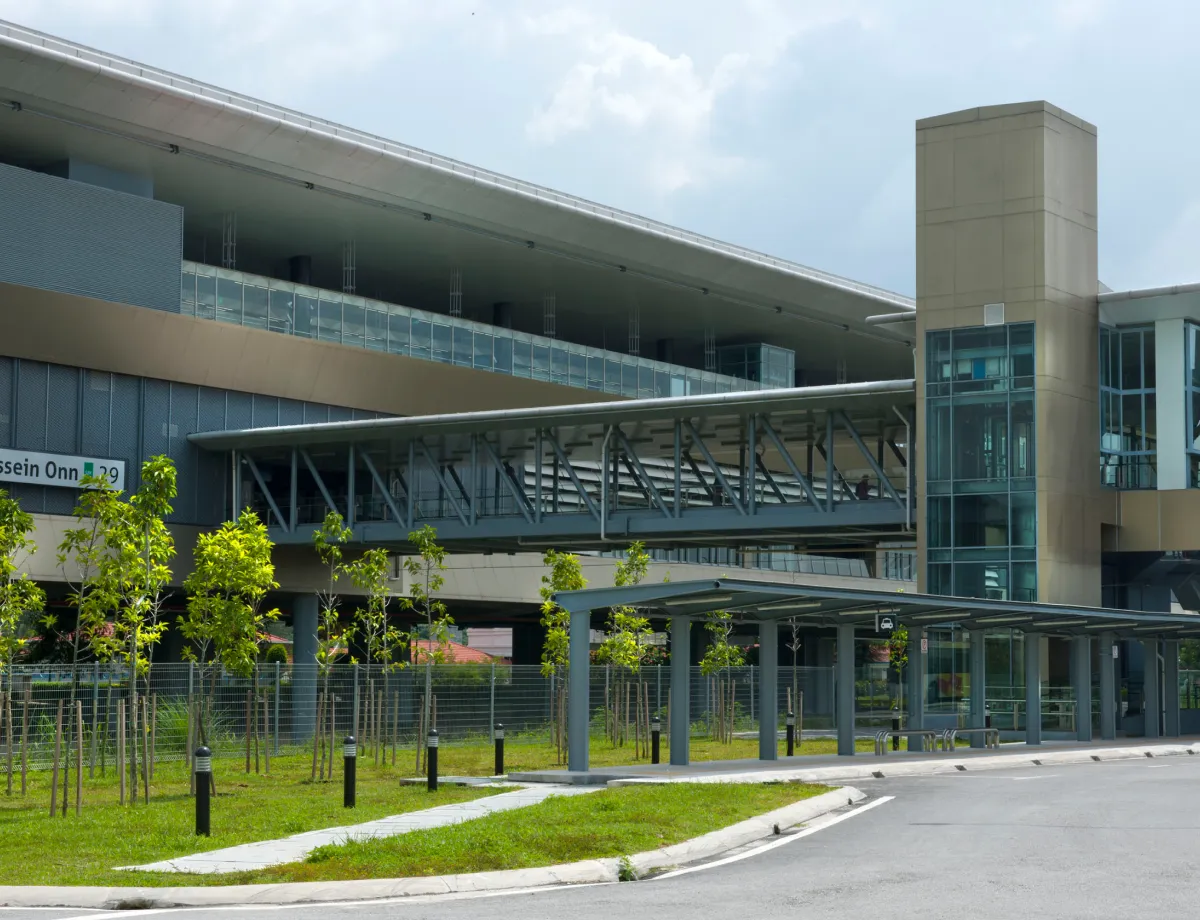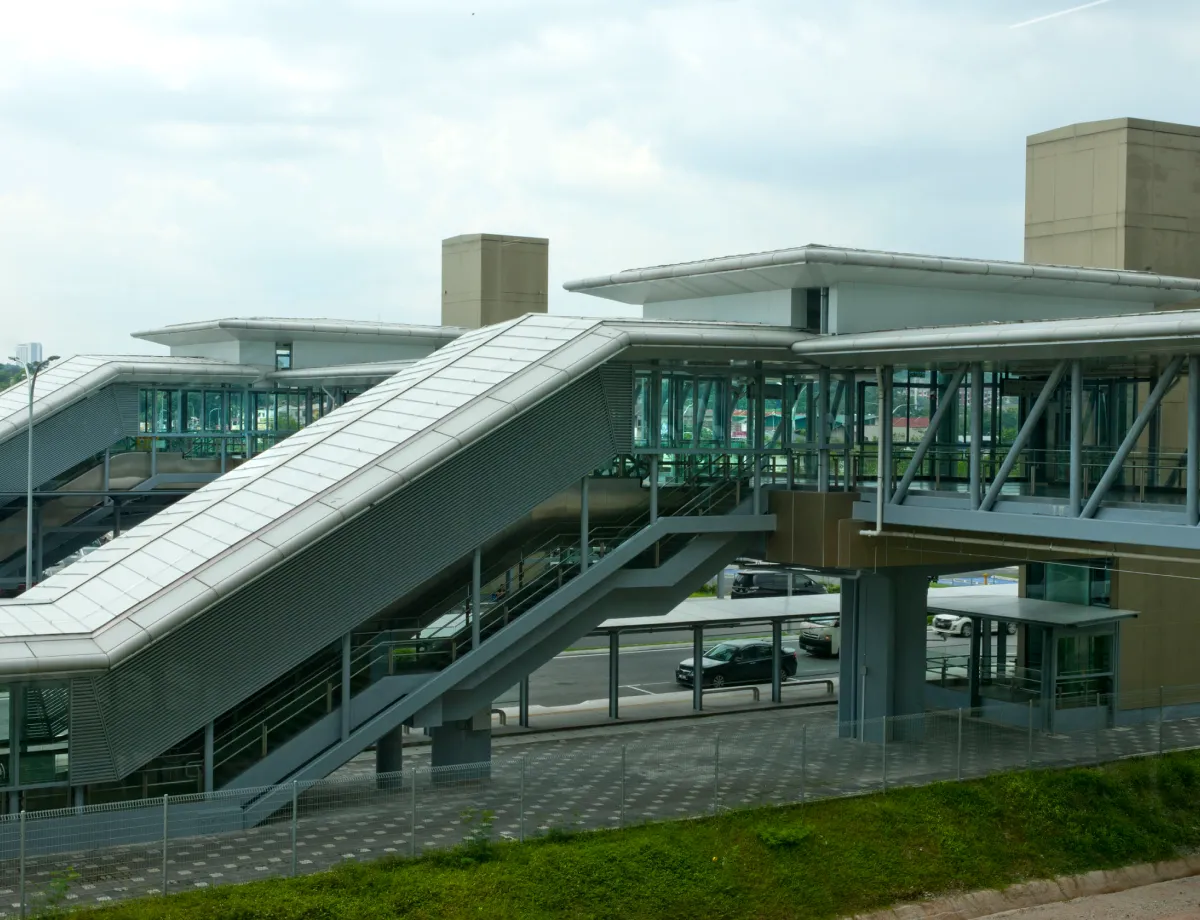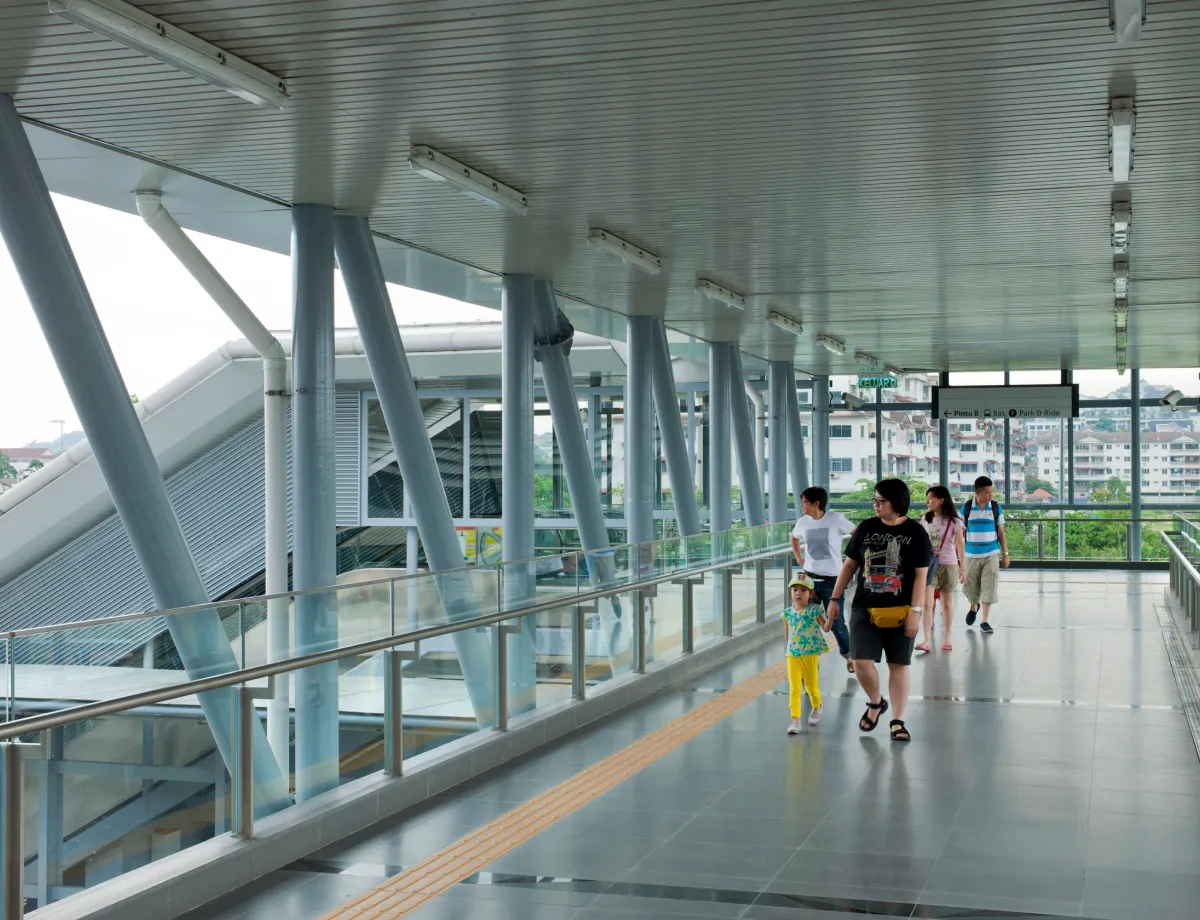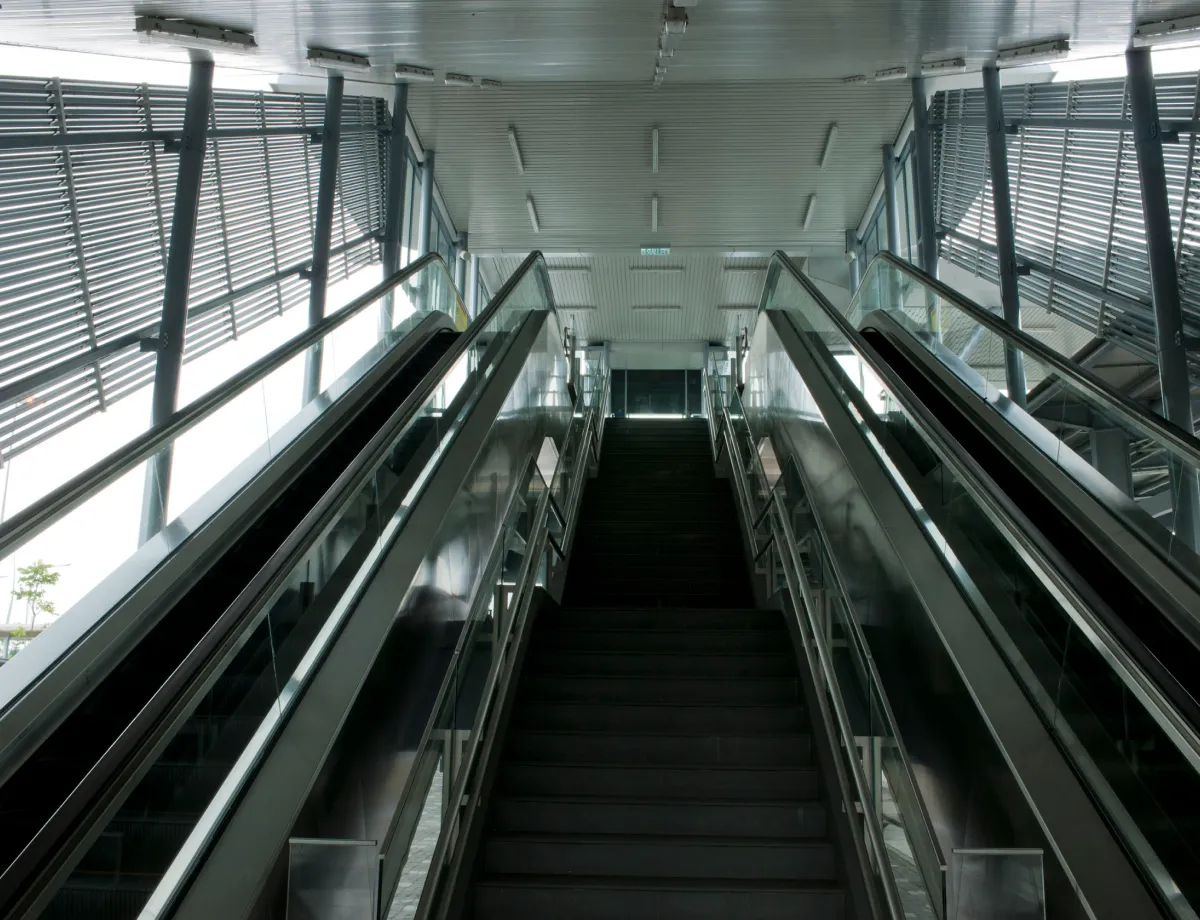MRT (Taman Suntex until Kajang)
The architecture of the elevated station for the Kajang Line is inspired by the traditional concept of wakaf, a type of pavilion commonly found in Malaysia. Historically, wakafs were built for travelers to stop, rest, and seek shelter from the elements. Embracing this concept, the elevated stations along the Kajang Line are designed to provide a similar sense of respite for commuters, with an emphasis on openness, natural lighting, and ventilation.
We have played a significant role in the design and development of eight elevated stations along the Kajang Line, spanning from Suntex station to Kajang Station. These stations feature varying configurations, generally adopting side or island platform layouts. However, where interchanges with other rail networks are required, modifications are made to the standard configurations. Despite these variations, one unifying element across all the stations is the distinctive oversailing roof, which not only adds to the visual identity of the stations but also serves a functional purpose.
The oversailing roof is a key architectural feature that provides shelter from the elements while allowing for natural ventilation. The roof design is derived from two parabolic angles intersecting perpendicularly, resulting in a unique, flowing shape. This distinctive roof form is further enhanced by a central glazed skylight, which runs along the length of the roof. This skylight allows additional daylight to penetrate the station, creating a bright and welcoming environment for commuters.
The structural composition of the roof is based on steel trusses, which are strong and capable of supporting the roof’s large overhangs. To ensure the roof is lightweight yet durable, a metal standing seam built-up roofing system is used. This system, provided by Bluescope, is known for its excellent performance in terms of durability, corrosion resistance, and color fastness.
Bluescope’s innovative steel materials, and their products are particularly well-suited for architectural applications where both aesthetic appeal and long-term performance are critical. The lightweight metal standing seam roofing used in these elevated stations is engineered to withstand the harsh environmental conditions typical of Malaysia, including high humidity and heavy rainfall, ensuring the longevity of the station structures.
One of the advantages of using Bluescope materials is the wide variety of colors available, which allows the designers to customize the appearance of each station according to its district or locality. This ability to tailor the color scheme of each station adds a layer of visual differentiation and helps integrate the stations into their respective communities. The selection of colors is not only a design choice but also reflects the cultural and environmental context of each station's location, creating a sense of place and identity for commuters.
Furthermore, the use of Bluescope's advanced steel materials in the roof construction also contributes to the sustainability goals of the project. The materials are designed to be long-lasting, reducing the need for frequent maintenance and replacements, which in turn minimizes resource consumption and environmental impact over the lifespan of the stations. The lightweight nature of the materials also means that less structural support is needed, allowing for a more efficient use of resources during construction.
In addition to the practical benefits, the architectural expression of the roof aligns with the overall design philosophy of the Kajang Line's elevated stations. The open-sided design, reminiscent of traditional wakaf pavilions, fosters a sense of openness and connection with the surrounding environment. This design approach not only enhances the commuter experience but also contributes to the overall urban landscape, making the stations more than just transit points, but landmarks that reflect the cultural heritage and architectural innovation of the region.
In conclusion, the elevated stations along the Kajang Line represent a thoughtful blend of traditional Malaysian architectural concepts and modern engineering solutions. Through its involvement in these stations, has successfully translated the essence of the wakaf into a contemporary context, creating spaces that are functional, sustainable, and visually striking. The use of Bluescope materials further enhances the durability, aesthetic appeal, and sustainability of these stations, ensuring they will serve the community well for years to come.
Project Information
Malaysia
Completed
Share your steel marvels with SteelPedia.
